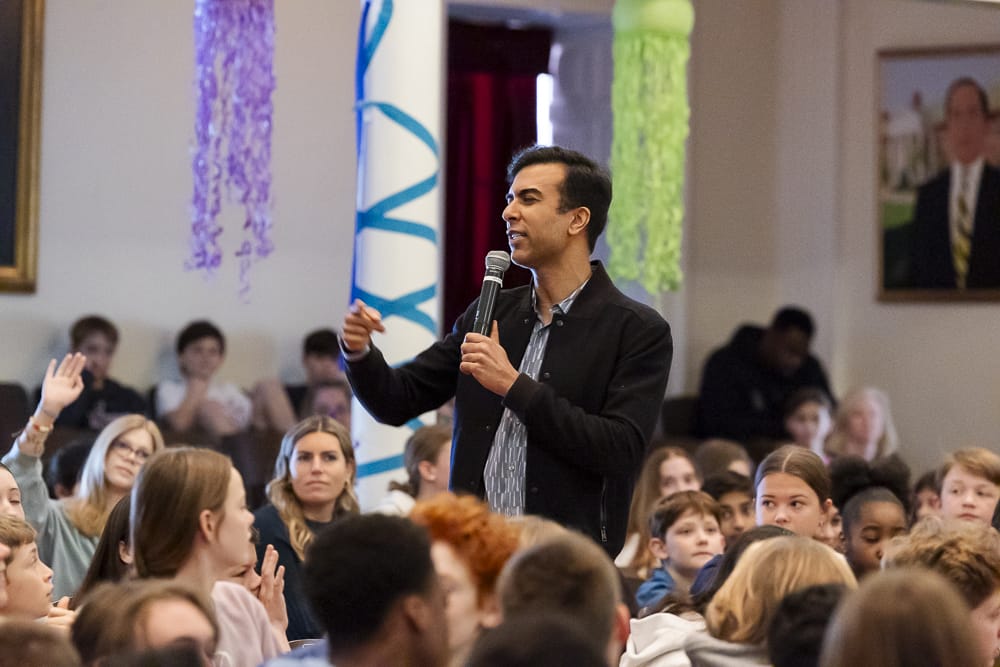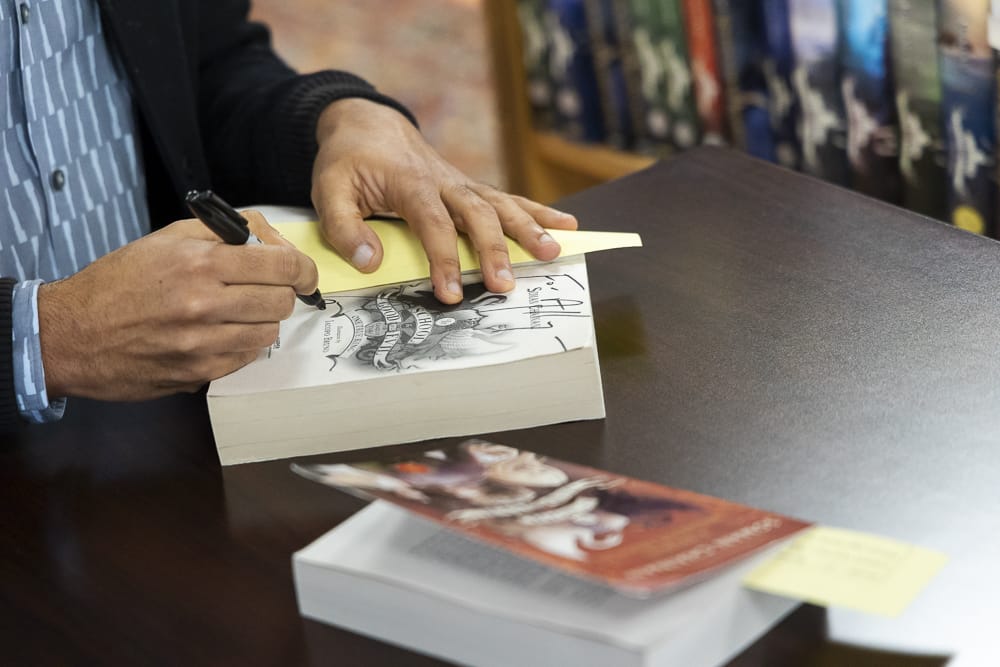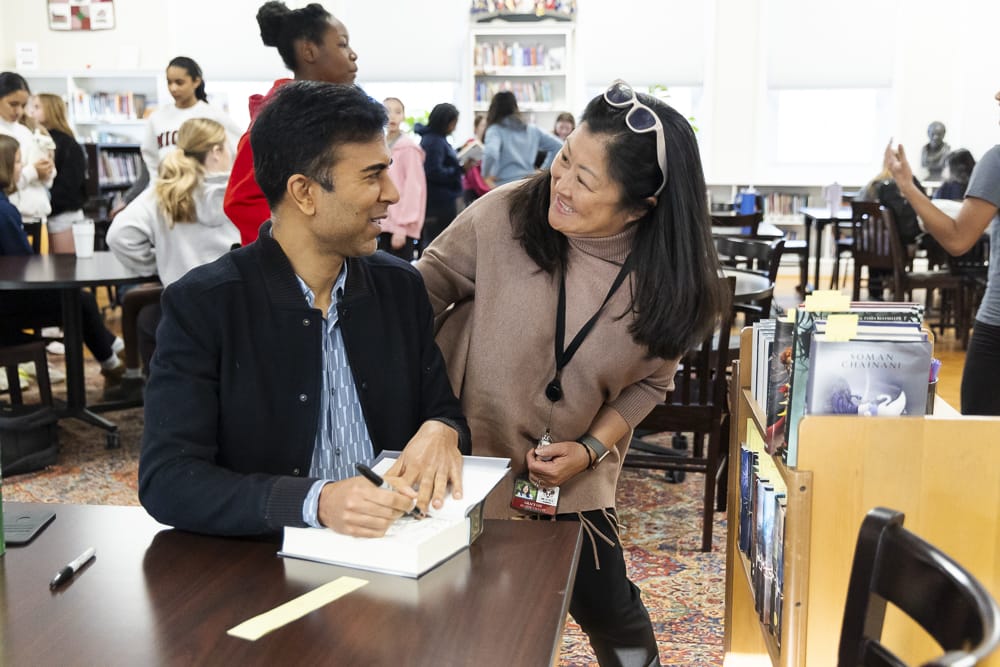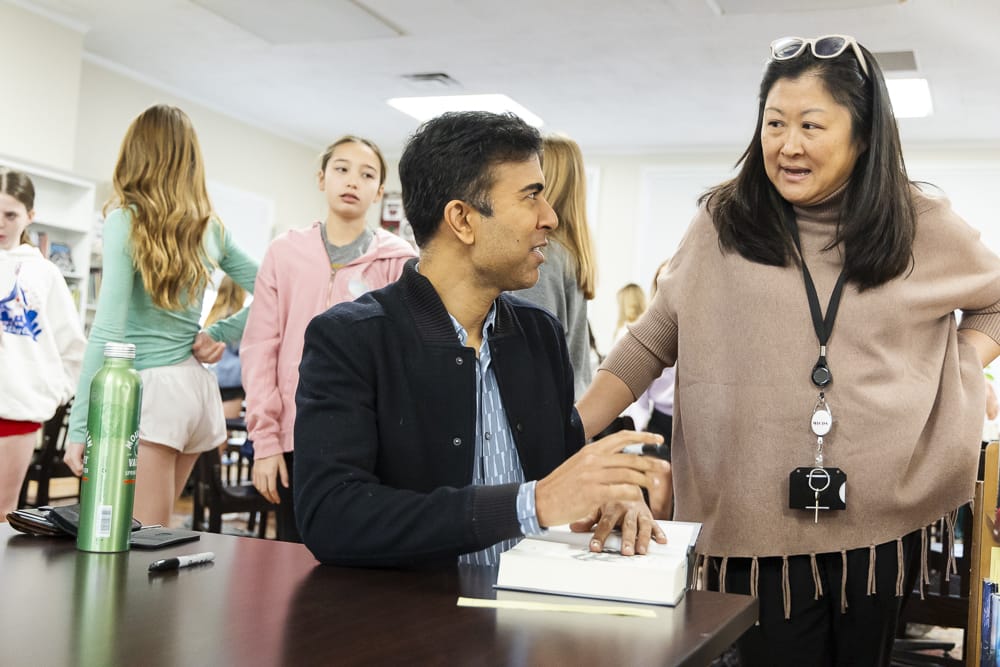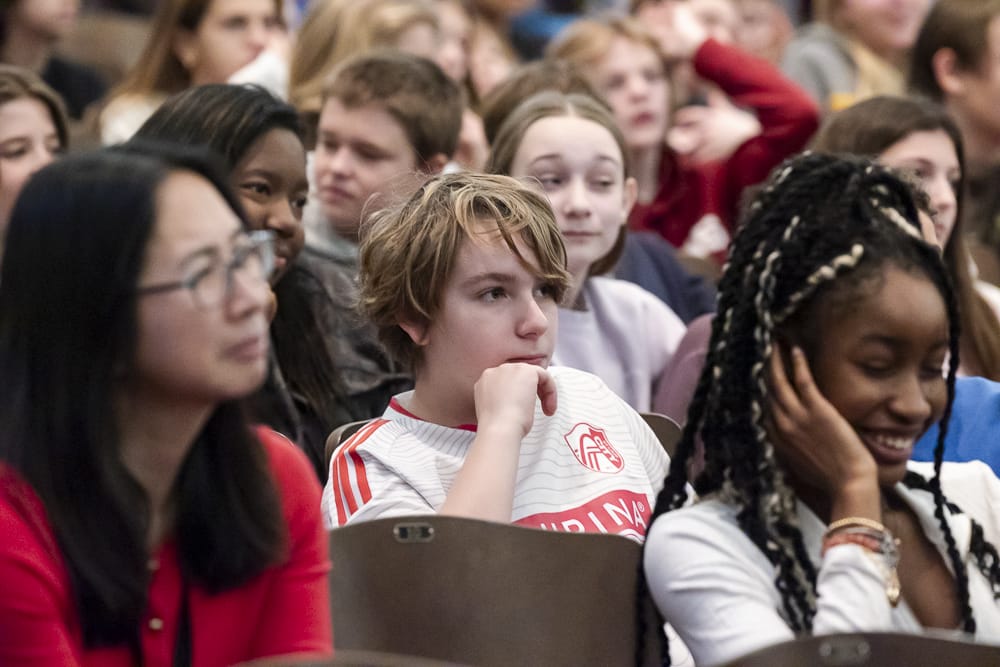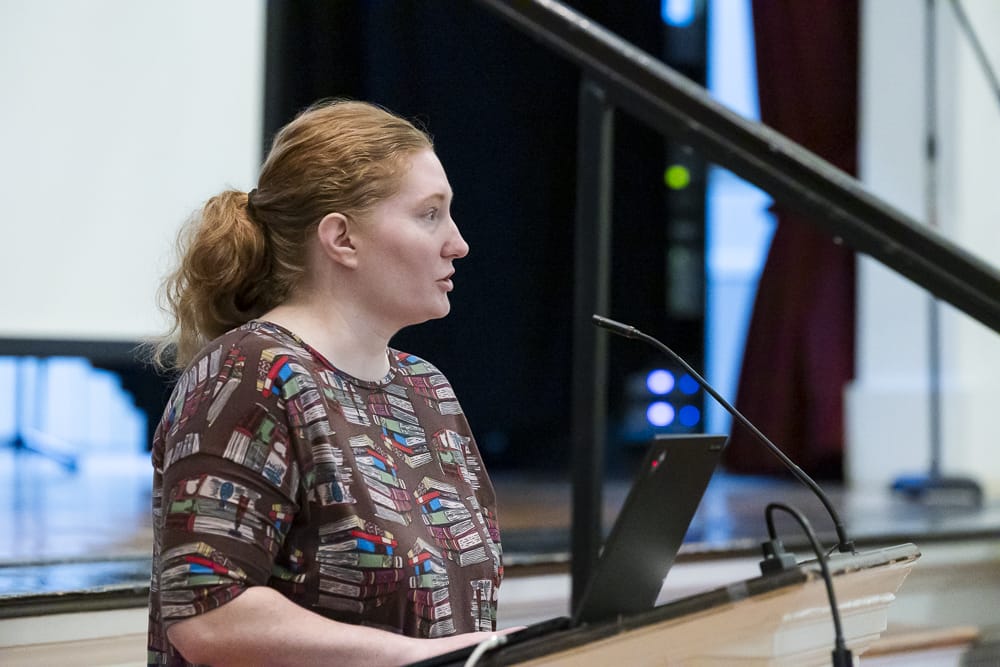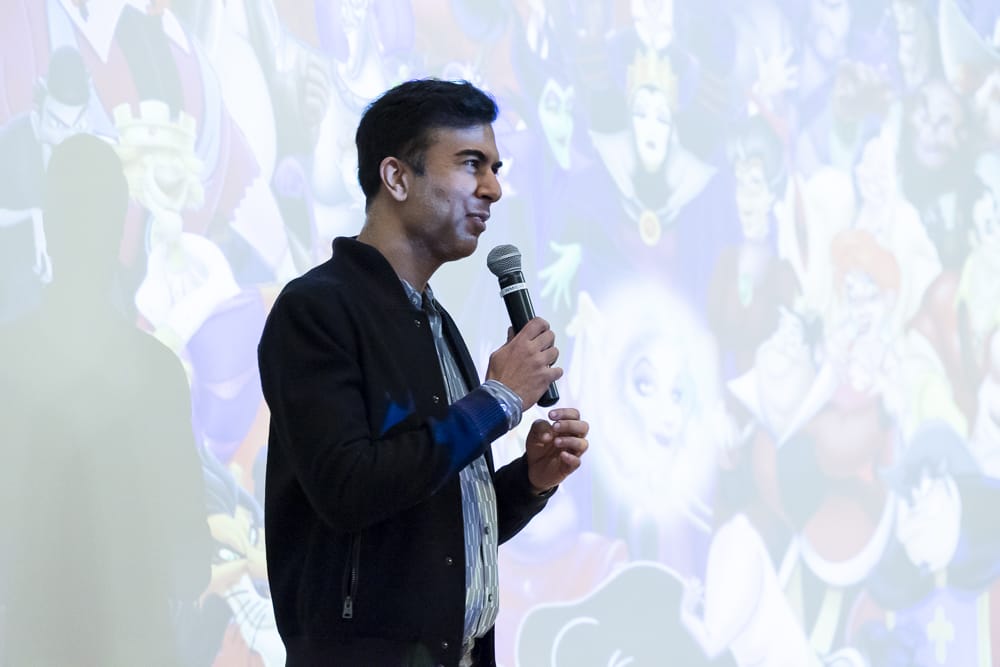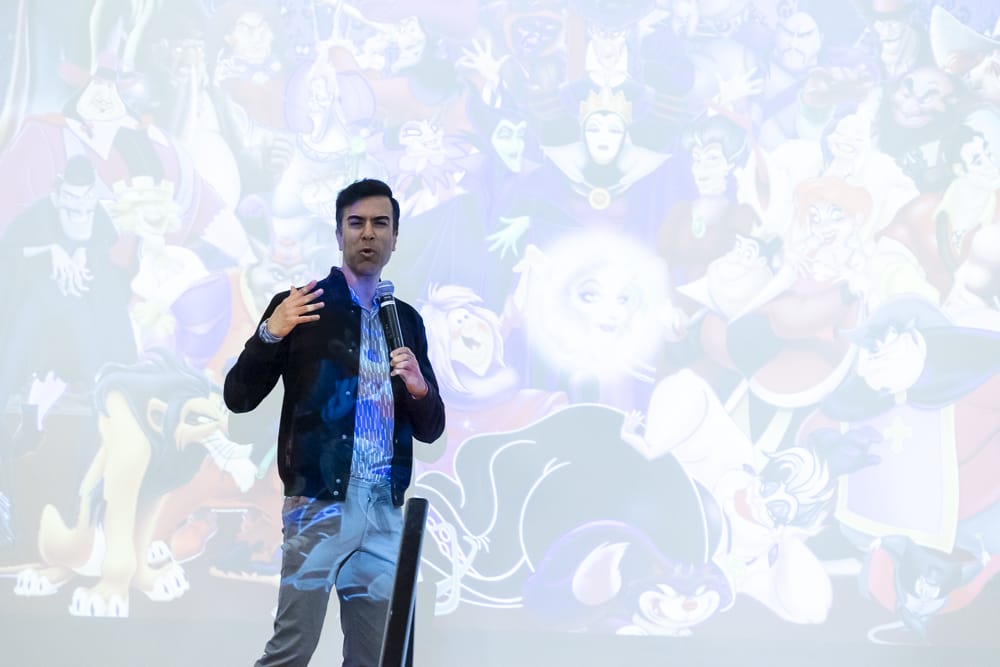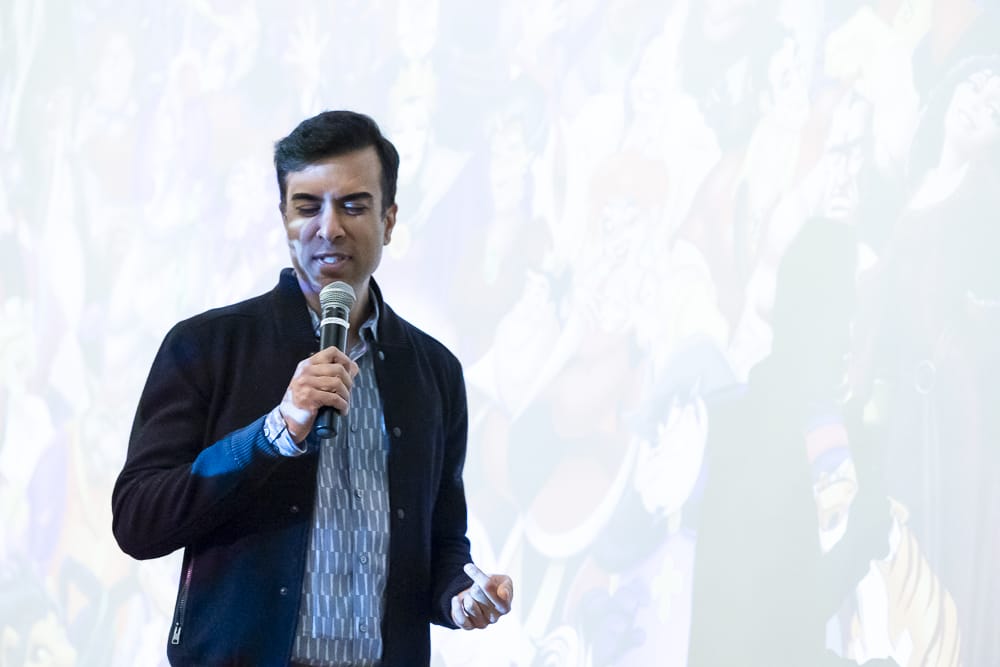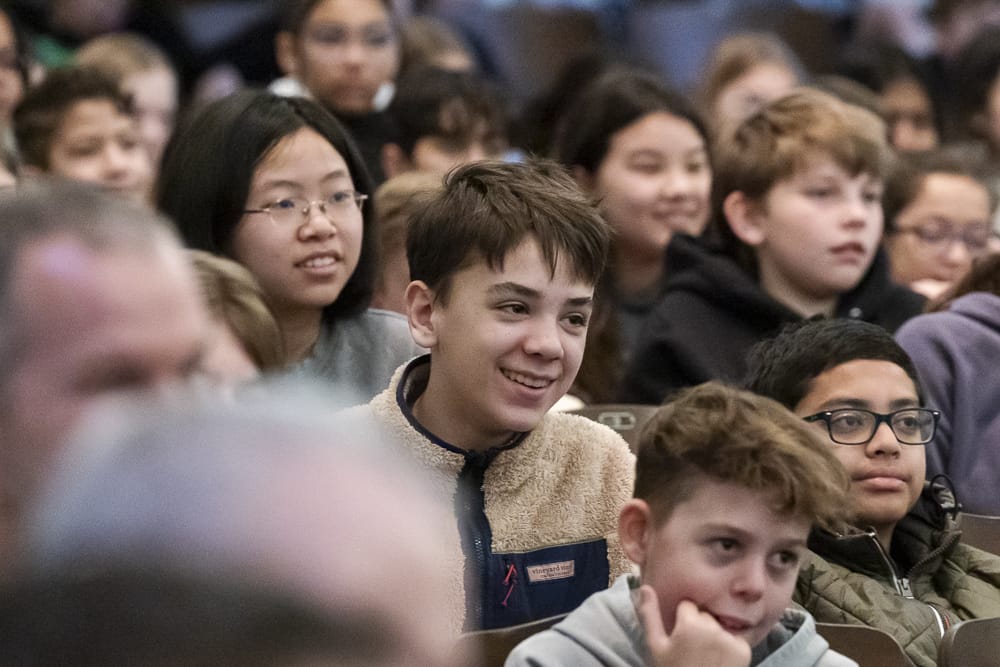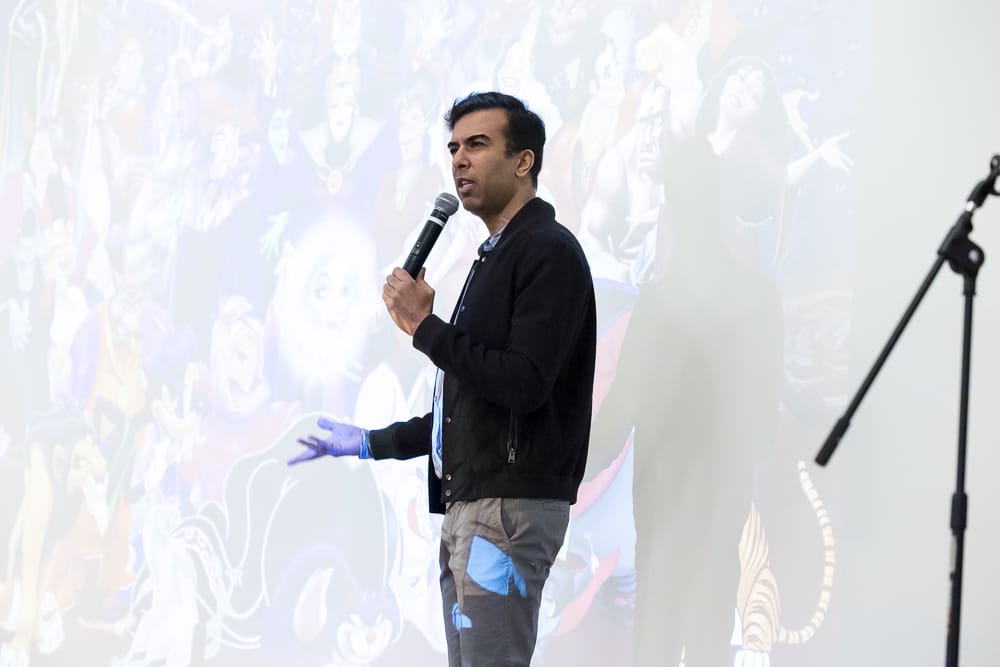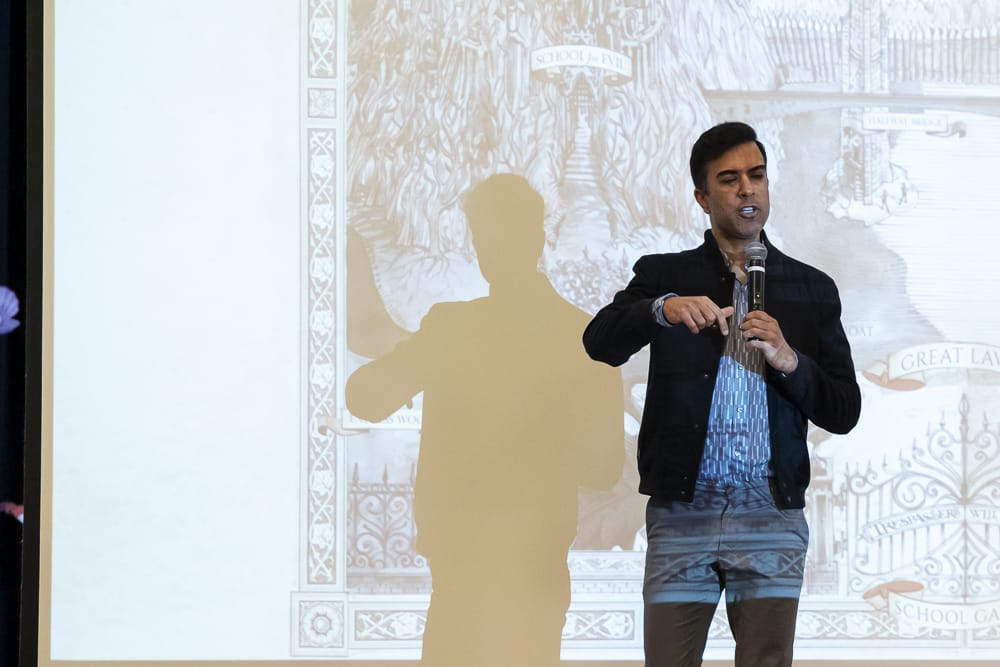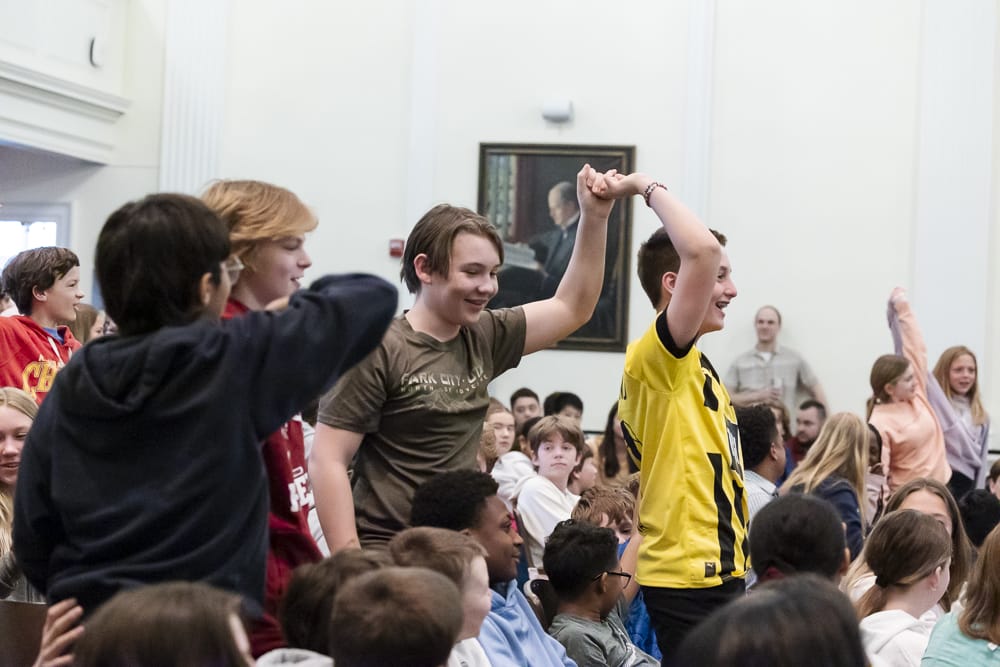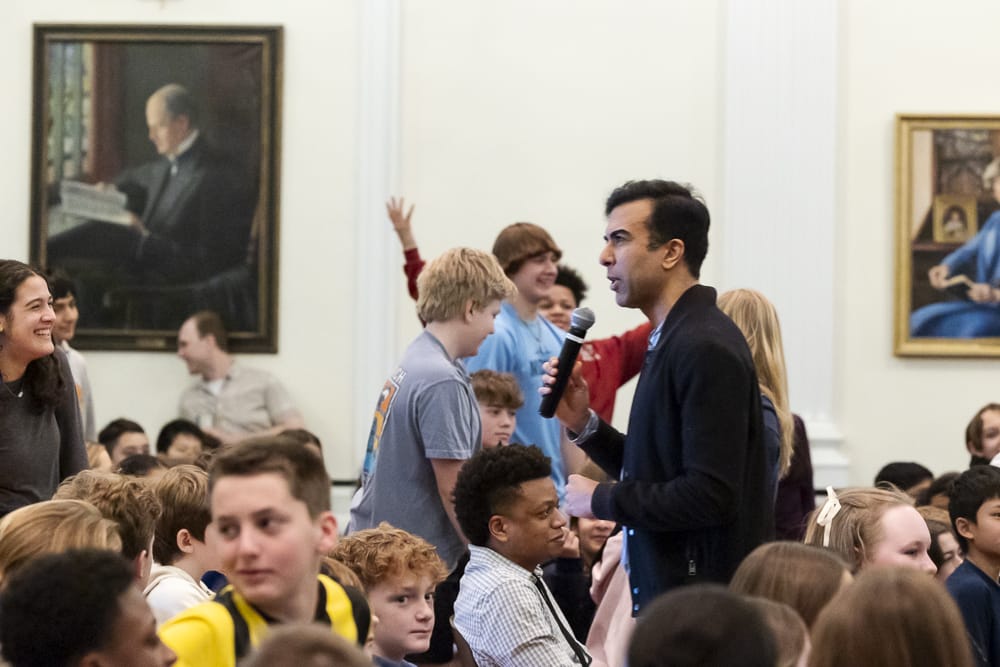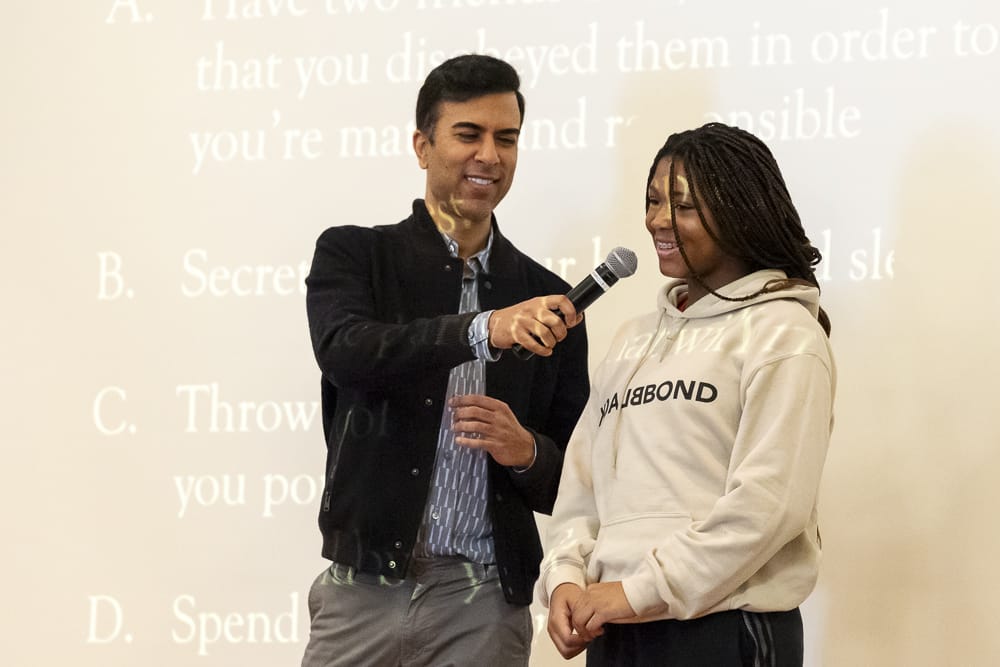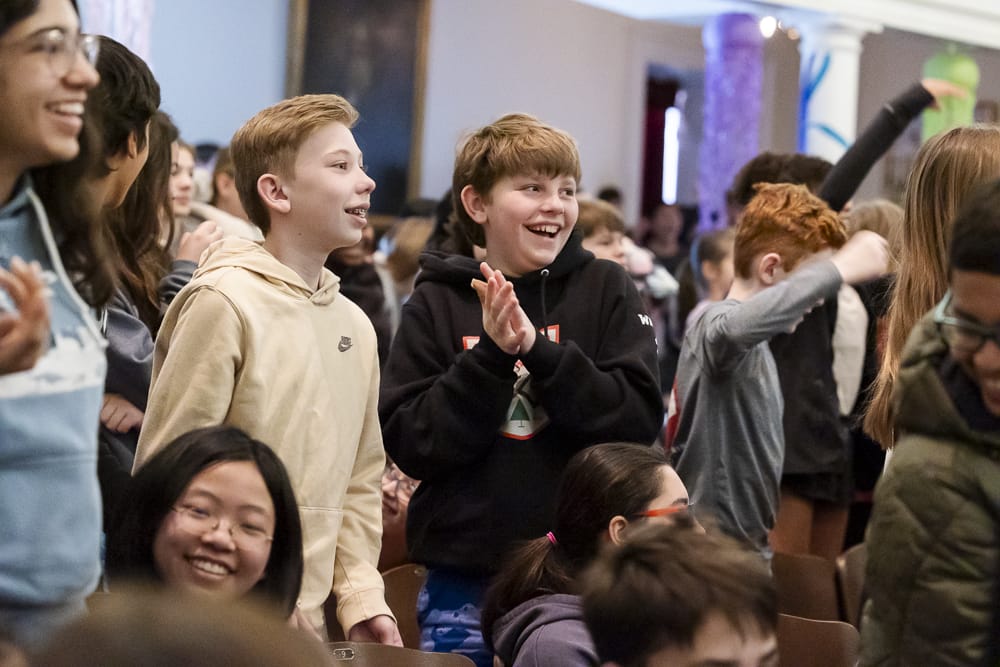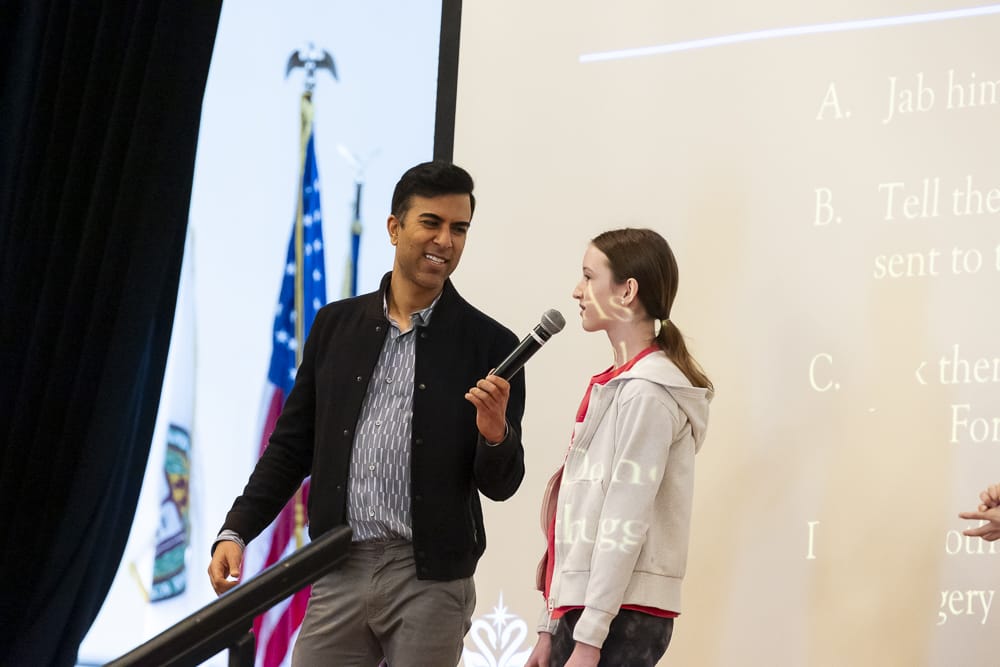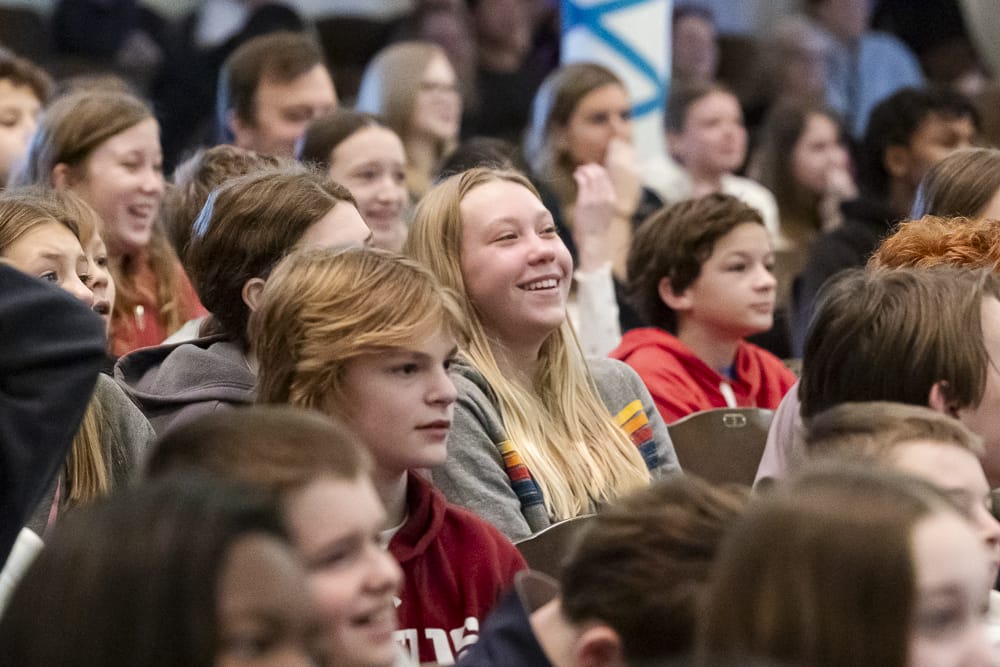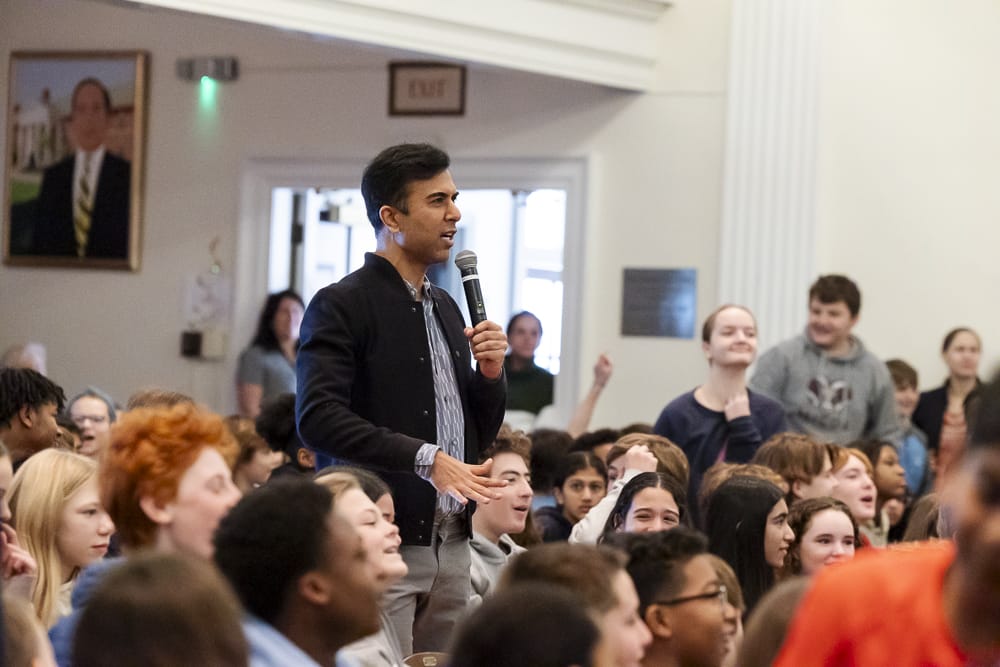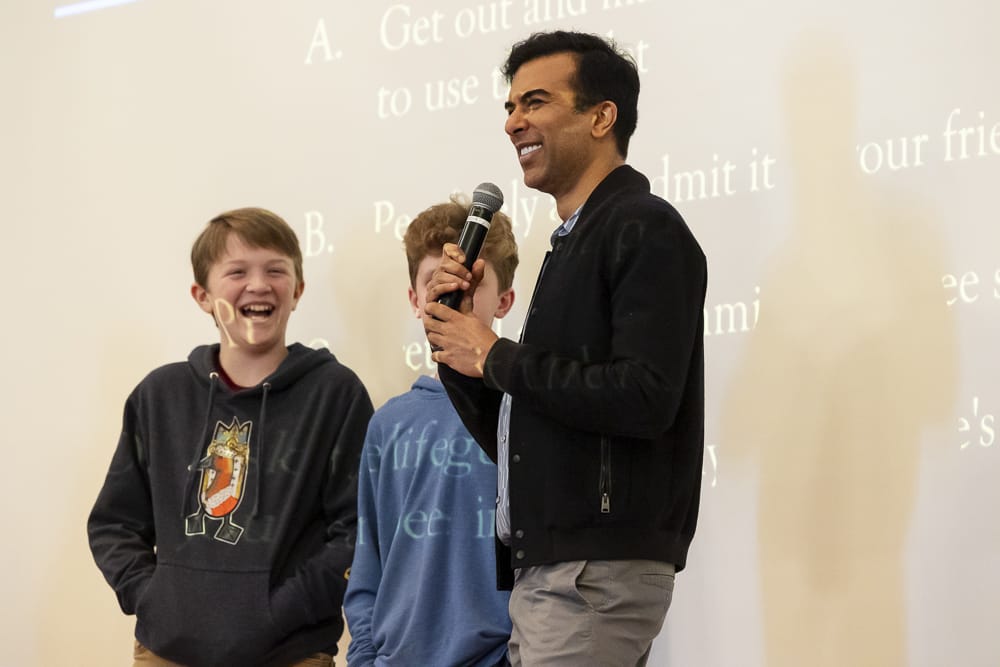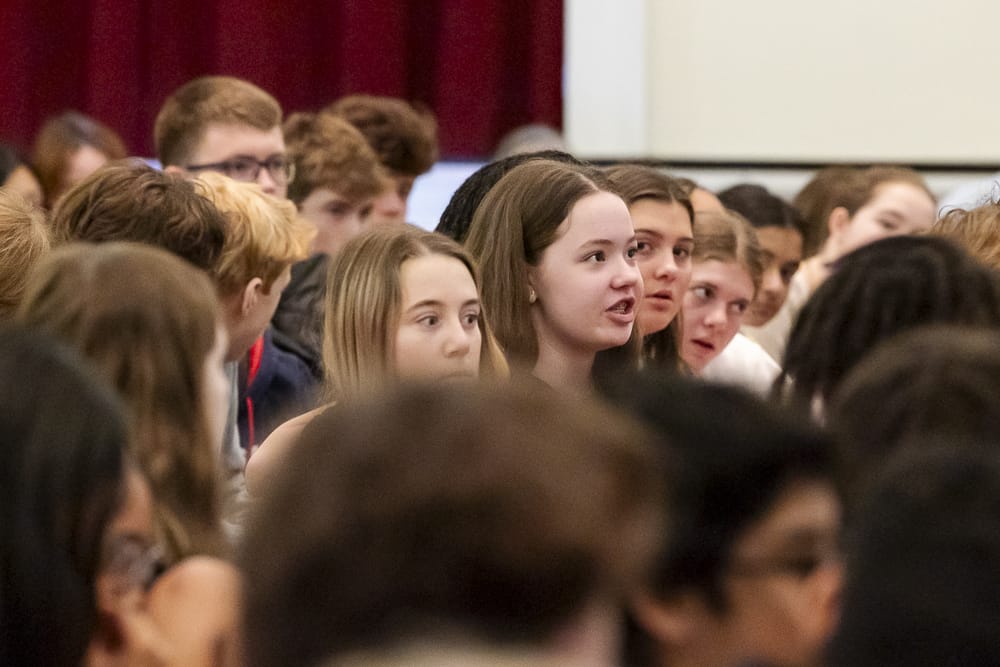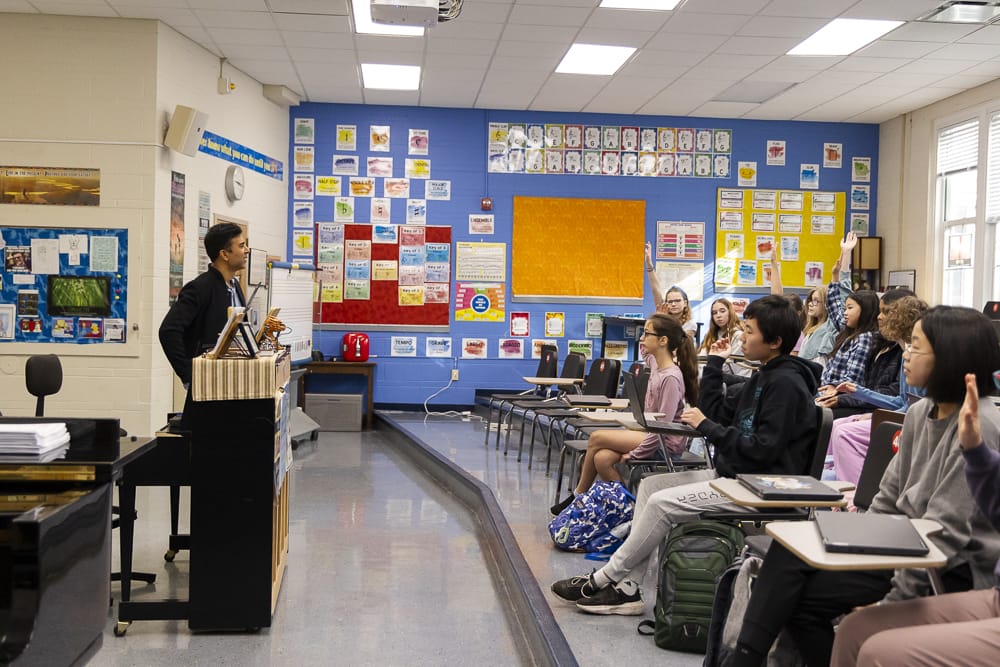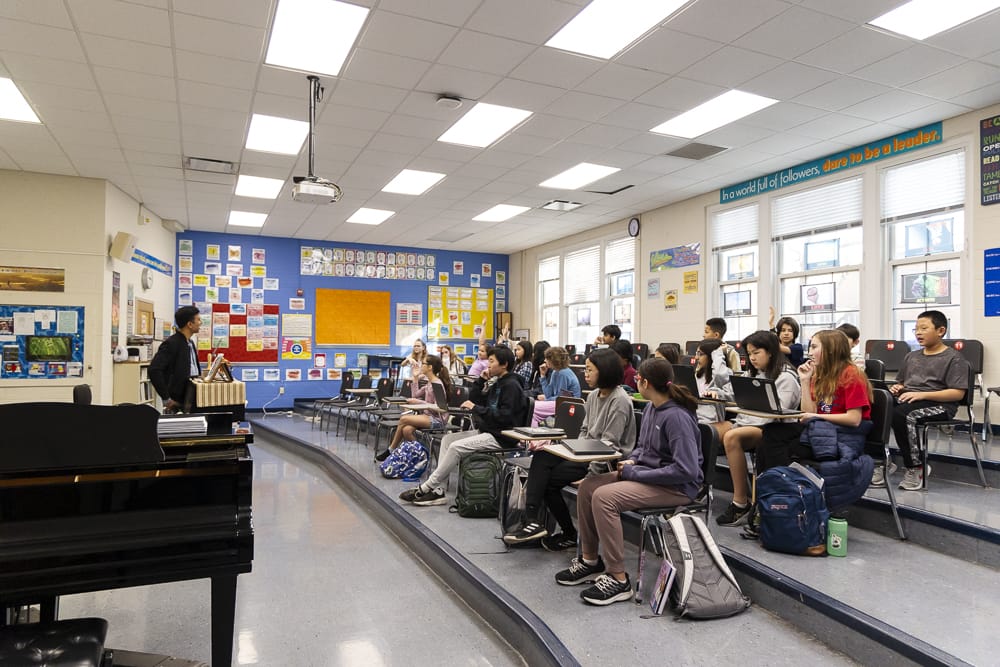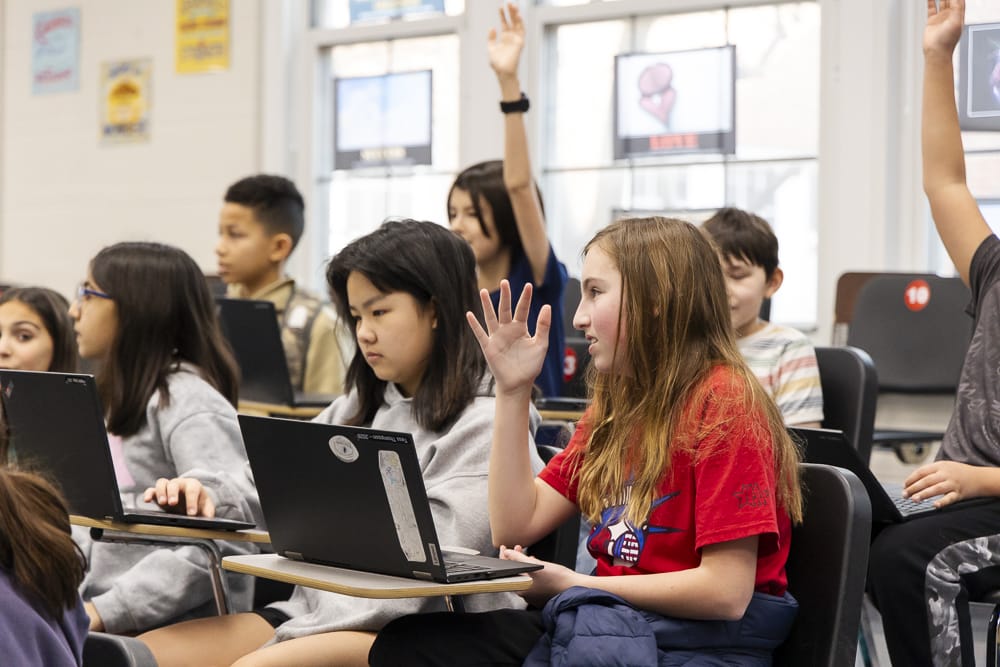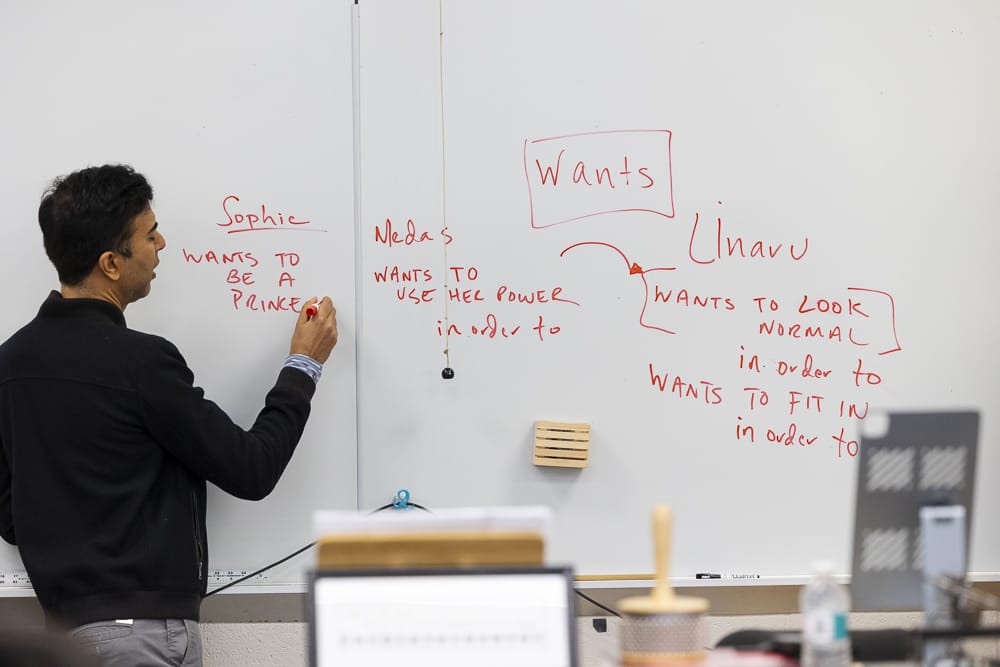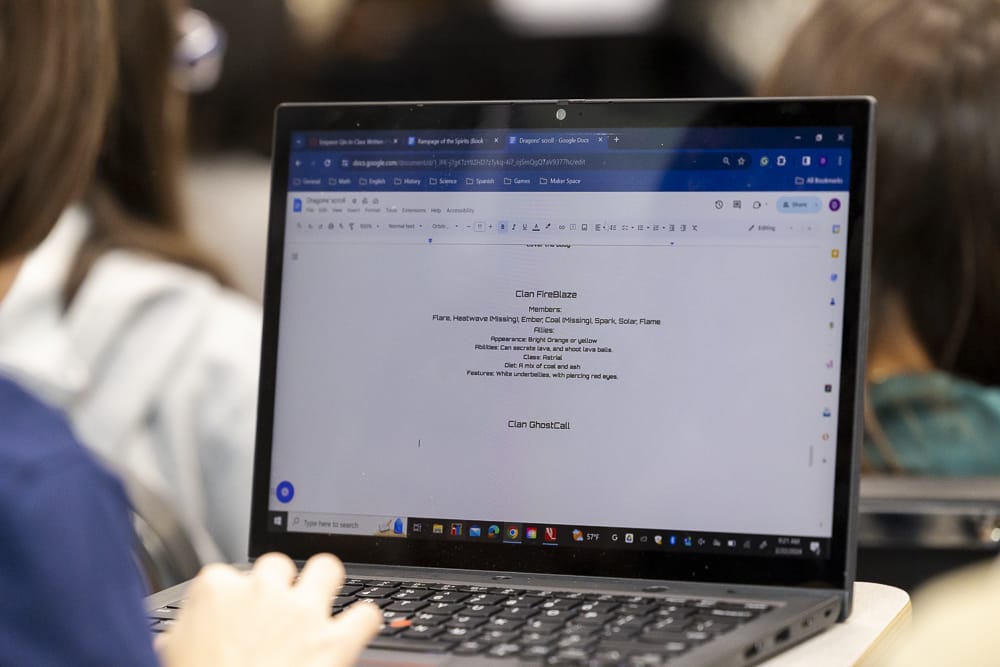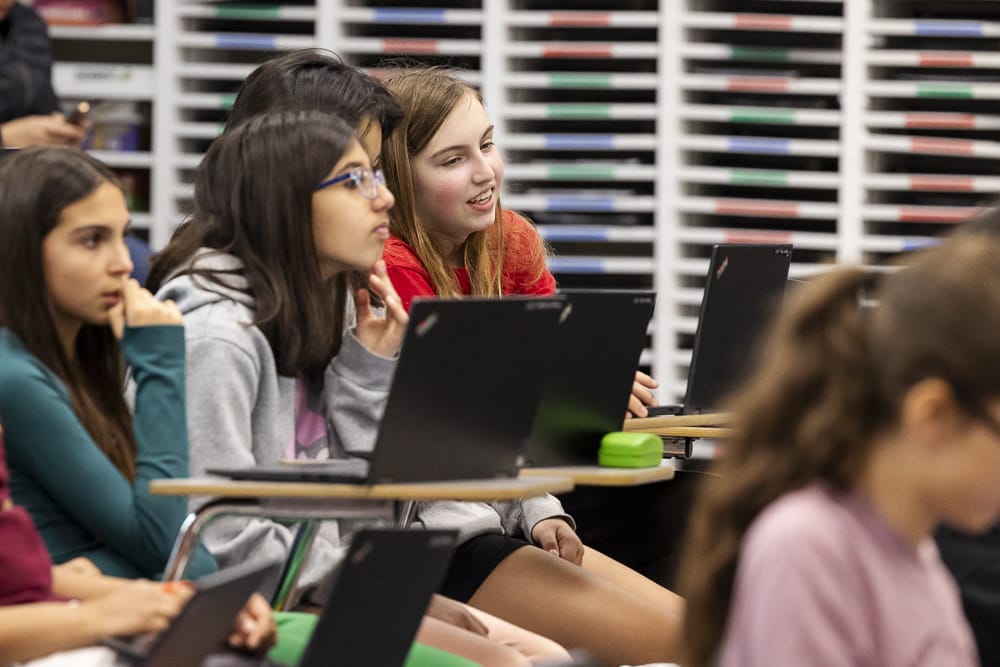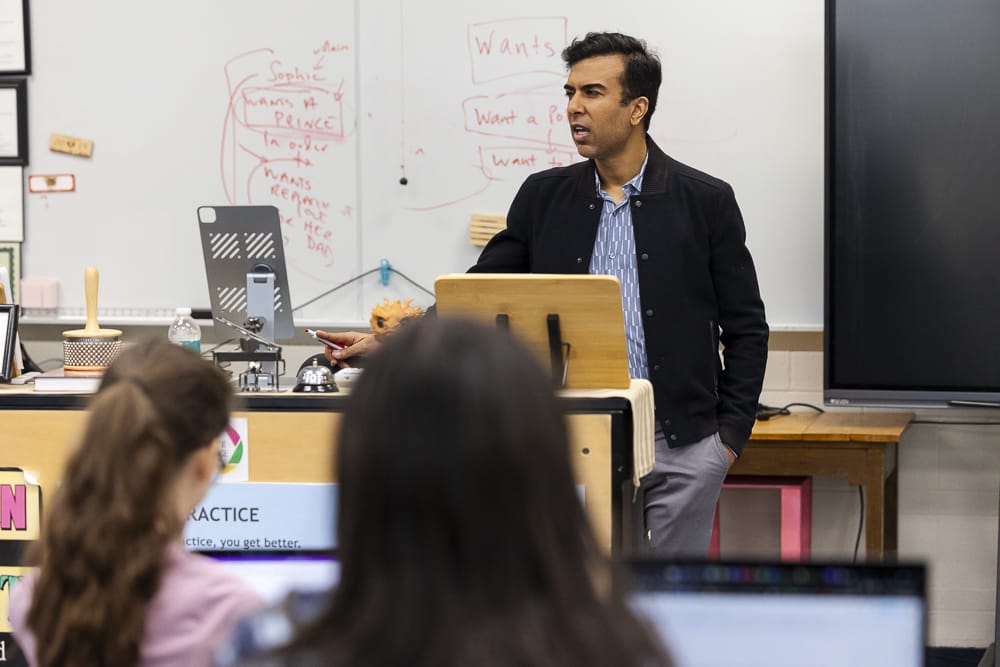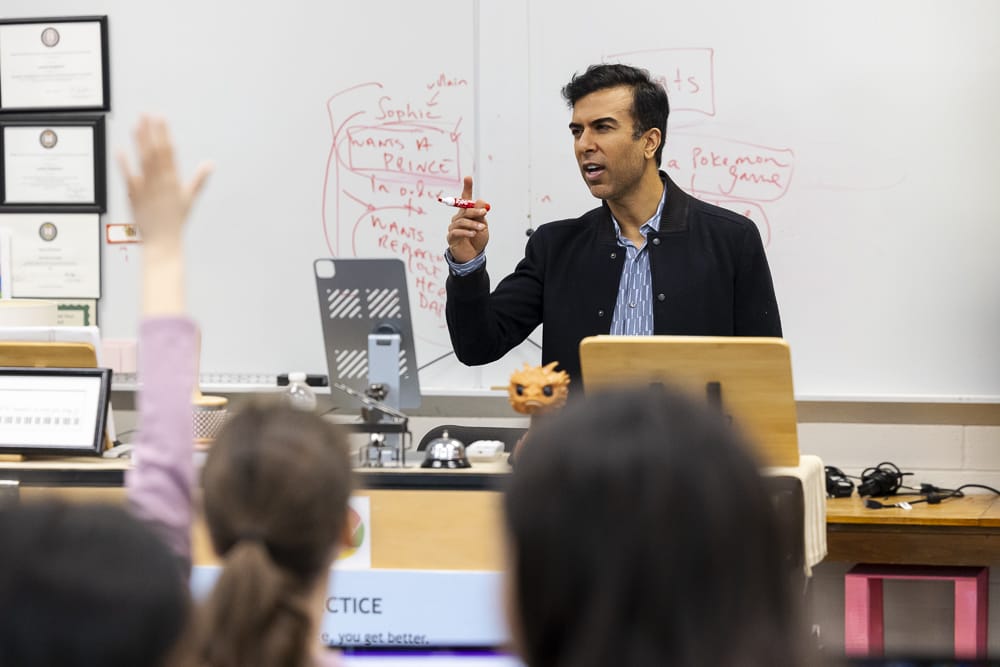With great excitement and anticipation, MICDS welcomed Soman Chainani, the author of the bestselling fairy tale fantasy series The School for Good and Evil, to our campus this week. Middle School Librarian Bethany Kavanaugh shared, “In the realm of literature, Chainani has not only proven himself to be a masterful story crafter but also the architect of a world where fairy tales can be imagined, and the concept of good and evil is explored in unexpected ways. Through his stories, he has transported readers to the halls of The School for Good and Evil, where students are trained to become heroes and villains who challenge our perceptions and consider morality and what makes someone good or evil. His stories entertain and carry valuable lessons that resonate with readers of all ages.”
The bestselling series The School for Good and Evil is an epic journey into a world where the only way out of a fairy tale is to live through one. The main series follows Sophie, Agatha, and others, along with prequels and other stories that bookend the legacy.
With her glass slippers and devotion to good deeds, Sophie knows she’ll earn top marks at the School for Good and join the ranks of past students like Cinderella, Rapunzel, and Snow White. Meanwhile, Agatha, with her shapeless black frocks and wicked black cat, seems a natural fit for the villains in the School for Evil.
After signing several copies of the books in his Good & Evil series in Messing Library, Chainani greeted the Middle School community at an assembly in Eliot Chapel. Chainani kicked off the presentation by sharing his childhood memories of rooting for the villain in Disney movies and how that led to creating a world where good and evil may not be what they seem.
“How I got here was a complete surprise to me. I thought I was going to be a pro tennis player. That was my dream in life. I played three to four hours a day, camps and tournaments, and I only had 20 minutes of TV before bed. Despite begging for a Nintendo, my parents were from India and thought video games were the enemy. So my sibling and I asked our grandparents for one. And one Christmas, they presented a giant box to us, and instead of a Nintendo, it was a box of 25 Disney cartoons. So as I grew up, Disney was exclusively what I watched. By the time I got to middle school, I’d seen every movie 100 times, been to Disney World several times, had the entire Disney store in my house, and memorized every line from every story. I thought I was going to work at Disney when I got older. However, I noticed in fifth and sixth grade that I was always rooting for the villain. As time passed, I had a bolt of lightning in seventh grade that rooting for the villain was right, and everyone else was wrong,” he said.
He then shared why he thinks that Disney warps the idea of good and evil.
Scar from The Lion King
Chainani said, “The main character traits of Simba are that he is not smart, not funny, and doesn’t want to be king. Sure, he sings one song about wanting to be a dictator, but he’s cute and cuddly and spends 90% of his time under the waterfall with his friends. Scar proactively engages Simba and is intellectually superior; he’ll never fight because he’s scrawny and weak, so he surrounds himself with hyenas and lets others do the dirty work. At the end of the movie, Simba does not return to Pride Rock on his own accord, and now Disney has to resolve it. So they make Scar fight Simba, and Scar dies.”
Ariel from The Little Mermaid
“In the first 30 seconds of the movie, Ariel is told not to go to the surface. What does she do? She’s disobedient and goes to the surface. Then she meets a guy on a boat, doesn’t ask anything about him, doesn’t know where he’s from, and he’s a lot older than she is. Then she goes to the bottom of the ocean to the ‘villain’ Ursula, who is Ariel’s father’s mortal enemy. She wanders into Ursula’s cave unannounced, and Ursula doesn’t kill her; she’s busy eating her meal and goes up to Ariel and asks, ‘How can I help you?’ Ariel is a traitor for even going to see her. Ariel signs a contract for legs (that she didn’t take the time to read), Ursula doesn’t give her the best deal, and Ariel doesn’t negotiate. Ursula later simply enforces the contract and dies for doing it. Ariel lives happily ever after,” added Chainani.
Chainani pointed out that Hans Christian Andersen wrote most of these fairy tales 200 years ago, and Disney changed them all. “I realized my childhood was based on a lie,” Chainani laughed. So, his goal was to eliminate the morality around who is good and who is evil.
Then Chainani posed a series of quizzes with different scenarios to the students on “good” and “bad” choices and everything in between with questions like:
- “Your parents are gone for the weekend. Do you stay home alone? Have one friend over? Have three friends over? Or throw a party?”
- “Someone at school hits you. Do you hit back? Meet them later off campus and fight? Tell the teacher? Do nothing?”
The audience participation showcased a hilarious array of student perspectives.
After a brief Q&A about story characters, plot twists, and the “easter eggs” in his books (and his rejection from Disney employment), Chainani met with a small group of students in fifth through eighth grades for a writer’s workshop.
For the workshop, students shared their work, from short stories and novels to entire book series. His primary exercise was discussing a tool that can make or break a story.
Building a Character
- Building a character involves asking: What does the character want? More importantly, WHY does the character want it?
- Example: A character wants to “look normal,” so we can assume she is not normal. She has wolf ears. She looks different.
- Then answer the prompt: The character wants to look normal in order to…
- Does she want to fit in? If so, she wants to fit in, in order to… and so on.
Tess Thompson ’28 enjoyed finding a new perspective in her writing. She said, “I enjoyed Soman Chainani’s visit, especially when he told us how Disney ‘heroes’ are not what they seem. Another part of his visit included the writer’s workshop, where we talked about character development and what our characters want. First he would start by asking the name of our character and we would tell him what the character wanted, then he would help us make their wants into something that will intrigue the readers. I haven’t read any of Soman Chainani’s books, but now I want to more than ever.” Crystal Su ’29 added, “I learned how people are like onions with many layers and characters should be, too.”
Chainani elaborated, “When you can keep answering the WHY, things get interesting. When the wants don’t match up, that is how villains get created. And the most important part is that you can’t do this exercise with your characters until you do it with yourself.
“It’s important to realize when you’re reading the books, they don’t tell you who the villain is. It’s constantly switching. It’s not knowing. Sometimes, you root for the wrong character, and they die. It’s like life in general. There may be a hero in your story who can absolutely turn out to be a villain.”
After the visit, Kavanaugh shared, “It is my honor and privilege to bring authors to our students. Having face-to-face interactions with the mind that wrote the books in their hands gives students an experience they’ll never forget. Soman Chainani was so engaging and interactive; he had kids (and adults) laughing, thinking, and reconsidering the world around them. I have loved hearing the excited buzz from students telling me how awesome of an experience it was. I loved that he was willing to spend some time working with our students in a writer workshop after the presentation and how the students came out with a new energy for writing! I keep telling them, I cannot wait to read your book someday.”
Rosie Kelley ’30 thoroughly enjoyed the visit and workshop. She said, “The thing I enjoyed most about his visit was when he debunked Disney’s The Lion King and The Little Mermaid. I’ll never see Disney the same way again!”
Thank you to Soman Chainani for visiting with our Middle School students and helping them flip the script.
P.S. His favorite Disney villain is Maleficent, and his favorite Disney heroes are Elsa from Frozen and any Dalmatian from 101 Dalmatians.
Soman Chainani’s The School for Good and Evil book series is now a major motion picture on Netflix starring Academy Award winner Charlize Theron, Kerry Washington, Laurence Fishburne, and more. Learn more about Chainani here and here.
